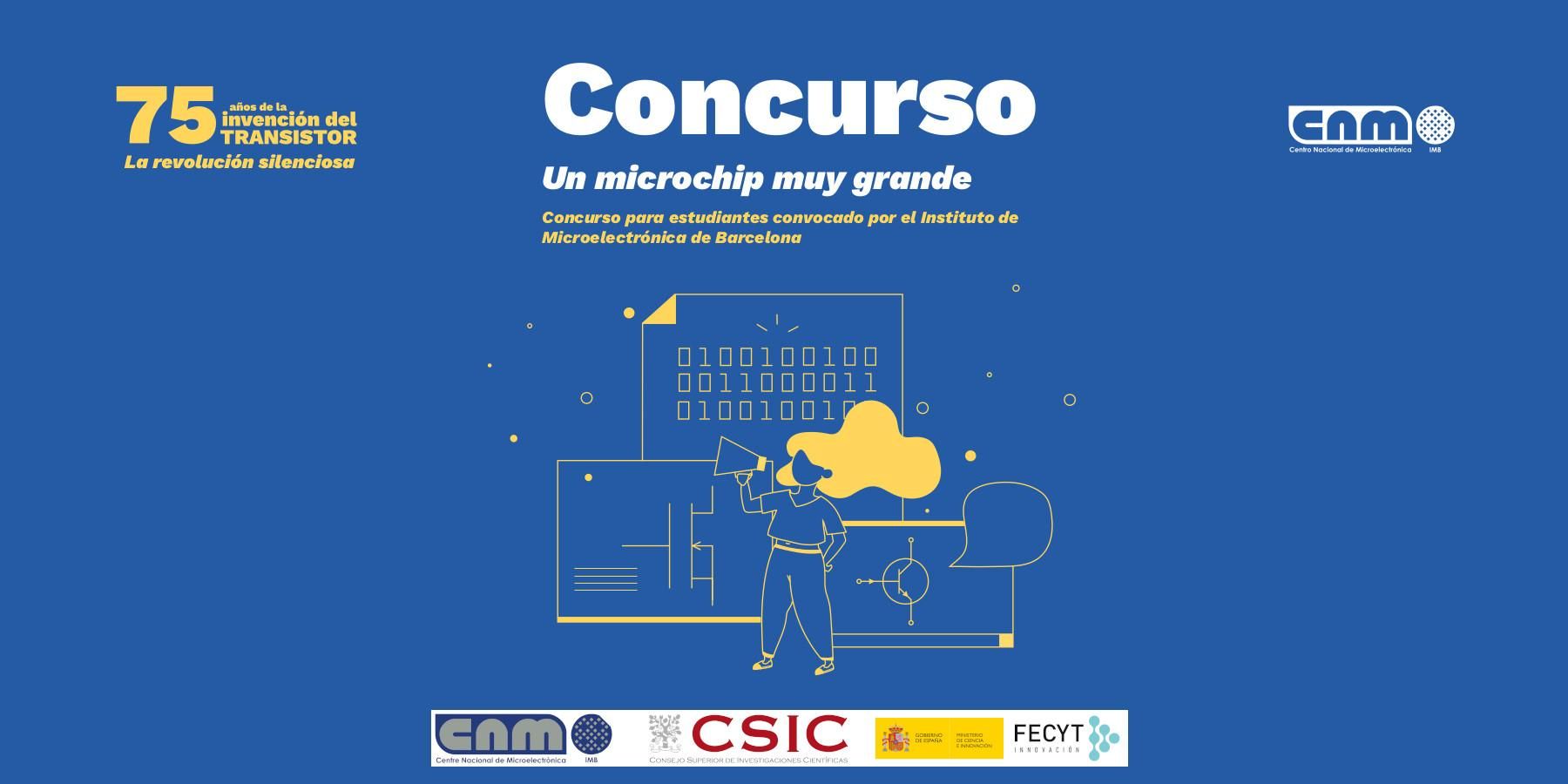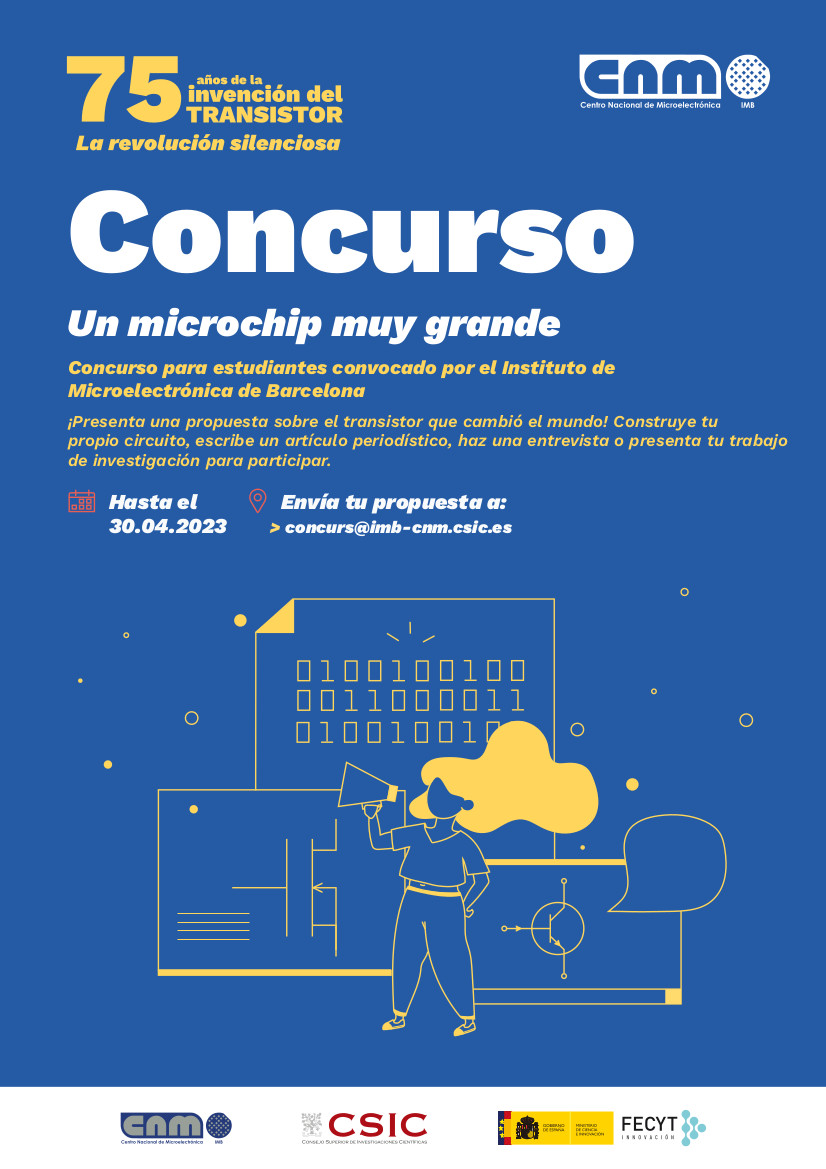The CSIC launches the microelectronics contest for students Un microchip muy grande in the context of the shortage of chips
The IMB-CNM-CSIC launches the initiative with the support of the Spanish Foundation for Science and Technology (FECYT) – Ministry of Science and Innovation, coinciding with the 75th anniversary of the invention of the transistor. The contest opens the reception of works until April 2023 and students from primary, secondary, high school and training cycles can apply, with three different prizes in each modality. The institute will make educational materials available to schools to promote the completion of the work.

 The Institute of Microelectronics of Barcelona (IMB-CNM-CSIC) launches the first microelectronics contest for primary and secondary school students, Un microchip muy grande. The initiative has the support of the FECYT and promotes knowledge of chips and microelectronic technologies in a context of supply crisis.
The Institute of Microelectronics of Barcelona (IMB-CNM-CSIC) launches the first microelectronics contest for primary and secondary school students, Un microchip muy grande. The initiative has the support of the FECYT and promotes knowledge of chips and microelectronic technologies in a context of supply crisis.
Un microchip muy grande is open to students of compulsory secondary education, baccalaureate and training cycles of basic and intermediate level; and also to the elementary education groups that participate in the outreach activities of the center. Until April 30, 2023, works can be submitted in different formats and are accepted from journalistic articles and essays to electronic circuit developments or research papers. Originality and creativity will be rewarded, as well as the value and difficulty of development, in the case of creating an electronic circuit.
The prizes, which include electronic material, visits to the institute and its Clean Room and vouchers to exchange for electronic games, will be three per modality, a total of twelve. The IMB-CNM-CSIC makes a series of materials available to schools that can be worked on transversally in the subjects of Physics and Chemistry or Technology.
Promote scientific vocations in the field of microelectronics
Microchips are inside any electronic device that we use on a daily basis and are the foundation of all the digital applications that accompany us and that we take for granted. However, the current crisis in the production and supply of semiconductors, which has caused delays in the release of the latest PlayStation 5, for example, has shown that general knowledge about them is limited.
The IMB-CNM-CSIC intends to promote its inclusion in the classroom and encourage its interest among young people through a contest to contribute to the creation of scientific vocations in the field of microelectronics.
"The context of the device crisis makes us detect the need to train new minds that are interested in microelectronics and, perhaps, will dedicate themselves to it in the future", indicates Luis Fonseca, director of the IMB-CNM-CSIC. "We want to promote these vocations among the youngest people and contribute to their training to configure a stronger fabric that results in greater technological sovereignty," he adds.
75 years of the microelectronics boom
Between 1947 and 1948, the transistor was invented, an electronic device that can be used digitally or analogically and that produces an output signal in response to an input signal. It is the expression of the 1 and 0 of the binary code. The IMB-CNM celebrates the relevance of this device in the Information Society and in the current digital revolution with conferences, an exhibition and educational materials to accompany the contest.
The transistor replaced the vacuum tubes in electronic devices, which allowed the miniaturization of all components. It is the basis of the memories and microprocessors that today make up computers, mobile phones and televisions. It is a fundamental device to understand how society works today.
Local and state institutional collaboration
The initiative is led by the IMB-CNM-CSIC, with the support of the CSIC and with the collaboration of the Fundación Española para la Ciencia y la Tecnología (FECYT) – Ministerio de Ciencia e Innovación. The contest team actively collaborates with institutes and schools in the area, to help create scientific vocations, as well as being part of institutional collaborations with the Museu Nacional de la Ciència i la Tècnica de Catalunya (MNACTEC) or the Escolab project, of the City Council Barcelona.




